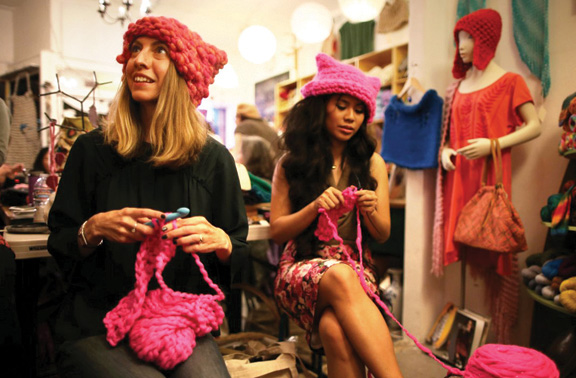
the now-iconic pink “pussyhats.”
In this age of Snapchat and Instagram, a visible symbol like the pink pussyhat could make a difference, thought Zweiman, who was a visual arts and economics concentrator at Brown and went on to get a master’s in architecture from Harvard. She explains that she and Suh considered “the practical idea of the drone shot or the shot from above” and picked the color pink in part because it’s so bright. And, in case you were wondering, those are indeed kitty-cat ears, not anything else. The hats are not a literal reference to Trump’s words, Zweiman said: “We’re not putting genitalia on our heads.”
Zweiman’s knitting teacher, Kat Coyle, designed a simple pattern, which the women posted online. In an effort to make the project inclusive, Zweiman said, the pattern specifically called for a type of yarn that is cheap and accessible. It worked. Soon thousands of knitters from all over the world armed themselves with knitting needles and brought their hats to drop-off points and knitting store “allies” that were organized internationally. “A marcher isn’t just representing herself,” Zweiman says, “but her hat-maker too.”
For many, knitting a pussyhat was an introduction to activism. Some had never picked up knitting needles before. “People would get in knitting circles and really bond with each other,” Zweiman says. “After the 2016 election, which was just mean, it was nice to take the humanity back.”




